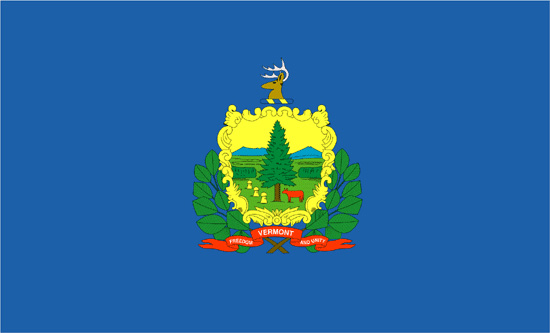Many Vermonters struggle with payday, auto, student, medical and other types of debt, so if that’s you, you’re not alone. Though The Green Mountain State has a fairly strong economy with 2.5% GDP growth, and a reasonably low unemployment rate of 3.2%, many Vermont residents struggle financially. In fact, 12.00% of residents live in poverty, and many struggle with debt
The average Vermonter has $5,577 in personal debt, plus $147,236 of mortgage debt per capita. On average, residents have an open credit card balance of $7,161 and 60% of residents have a student loan, the average amount of which is $30,651 . Each year approximately 523 Vermonters declare bankruptcy. If this is you, there are Vermont debt consolidation options to help you reach your financial goals.
So whether you live in Burlington, Rutland, Essex Junction, or somewhere in-between, take charge of your financial situation and consider consolidating your debt load.
Table of Contents
The Best Debt Consolidation Companies in Vermont (updated 2020)
Finding a legit debt consolidation firm can be tough. We’ve done the research and picked the [n] best debt consolidation firms in the state of Vermont. Our criteria includes online reputation, breadth of services offered, and demonstration of expertise. All have at least an A rating with the Better Business Bureau.
No companies found that meet criteria
Vermont Debt Statistics
| Total Debt | $3,502,960 |
| Debt Per Capita | $5,577 |
| Debt Per Capita Rank | 9 |
Source: World Population Review
Vermont Credit Card Debt Statistics
| Average Credit Card Balance | 680 |
| Average Credit Score | $7,161 |
| Avg Credit Card Balance Rank (1 = Highest Balance) | 3 |
| Avg Credit Score Rank (1=Highest Score) | 25 |
Source: Experian
Mortgage Debt in Vermont
| Mortgage Debt Per Capita | $147,236 |
| Avg 30 yr Mortgage Rate | 3.92% |
| Avg 15 yr Mortgage Rate | 3.39% |
| Median Home Value | $210,600 |
| Avg Outstanding Mortgage Debt | $147,241 |
| Difference Between Value and Mortgage Debt | $63,359 |
| Avg Homeowner FICO Score | 726 |
Source: Federal Reserve, Value Penguin, Experian
Payday Loan Debt in Vermont
| Payday Loan Legal Status | Legal |
| Max Payday Loan Amount | nan |
| Max Payday Loan Term | nan |
| Max Payday Loan APR | nan |
Source: Vermont Government Website
Unemployment and the Economy of Vermont
| Poverty Rate – Population | 12.00% |
| Poverty Rate – Population – Rank | 40 |
| Poverty Rate – Family | 7.80% |
| Poverty Rate – Family – Rank | 45 |
| Unemployment Rate (March 2020) | 3.2 |
| Unemployment Rank | 10 |
| GDP Growth | 2.5 |
| GDP Growth Rank | 6 |
Source: US Census, Bureau of Labor Statistics
Student Loan Debt in Vermont
| Percent of Population with Student Loans | 60% |
| Average Student Loan debt | $30,651 |
| Average Debt of New Graduates (2017-18) | $31,431 |
| Average Debt Rank | nan |
| Percent of Graduates with Debt (2017-18) | 63% |
| Percent with Debt Rank | nan |
| Usable Institutions (BA-Granting) | 7 |
| Percent of Graduates at Schools with Usable Data | 71% |
| Nonfederal debt of graduates, as percent of total debt | 33% |
| Fall enrollment – Undergraduate total (IPEDS) | 37,316 |
| Tuition and Fees (in-district/in-state) | $27,638 |
| Total Cost of Attendance (on-campus) | $43,883 |
| Percent of Institutional Grants that are Need-Based | 77% |
Source: Value Penguin, TICAS
Cost of Living in Vermont
| Annual Mean Wage (All Occupations) | $50,150 |
| Median Monthly Rent | $1,599 |
| Value of a Dollar | $0.98 |
| Cost of Living | 114.5 |
| Cost of Living Rank | 39 |
| Grocery Cost Index | 111.3 |
| Housing Cost Index | 126.7 |
| Utilities Cost Index | 120.2 |
| Transportation Cost Index | 119.9 |
| Miscellaneous Cost Index | 101.2 |
Source: World Population Review

